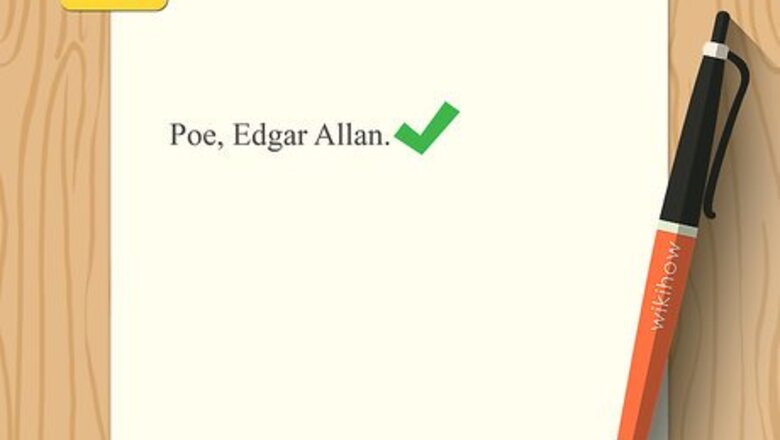
views
MLA
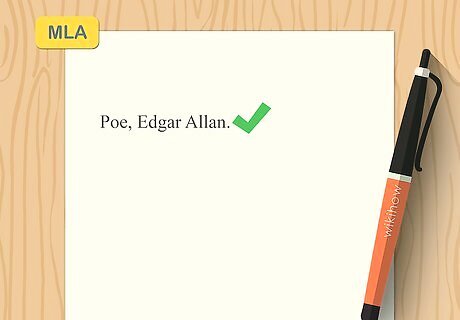
Start your Works Cited entry with the author's name. Provide the last name of the author of the short story, followed by a comma and the author's first name. Include a middle name or initial if they are commonly used. Place a period after the author's first name. Example: Moore, Lorrie.
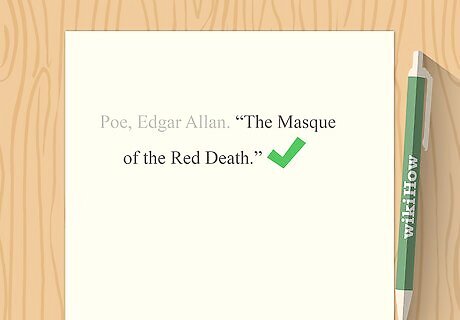
Provide the title of the story in quotation marks. Since the short story is a smaller work inside a larger one, the title is enclosed in quotation marks. Type the title of the story using title case. Place a period at the end of the title, inside the closing quotation marks. Example: Moore, Lorrie. "Community Life."
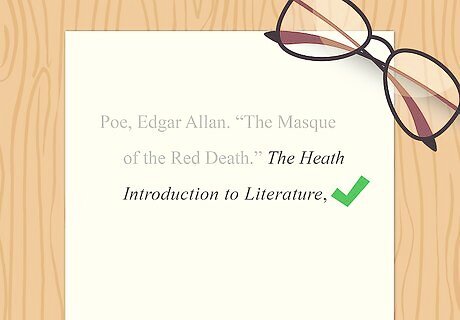
Add the title of the anthology or collection in italics. After the title of the short story, type the title of the anthology or collection where the short story appears. Place a comma after the title of the anthology or collection. Example: Moore, Lorrie. "Community Life." Birds of America, If the larger work is an anthology or collection of stories by several authors, include the name of the editor after the title of the anthology or collection. Place a comma after the editor's name. For example: Poe, Edgar Allan. "The Masque of the Red Death." The Heath Introduction to Literature, edited by Alice S. Landy, If the short story was published independently, such as on a website, skip this part of the citation and move on to the publication information.
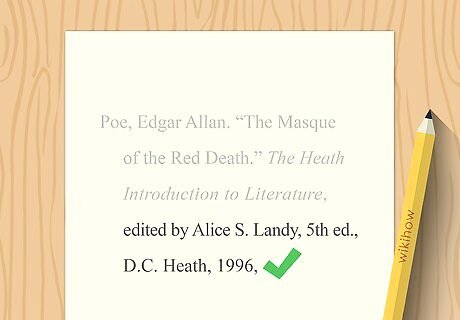
Include publication information. If the anthology or collection has a volume or edition number, list that followed by a comma. Then provide the name of the publisher, also followed by a comma. End publication information with the year the anthology or collection was published, followed by a comma. Example: Poe, Edgar Allan. "The Masque of the Red Death." The Heath Introduction to Literature, edited by Alice S. Landy, 5th ed., D.C. Heath, 1996, If you found the short story online, provide the direct URL for the story instead of print publication information.
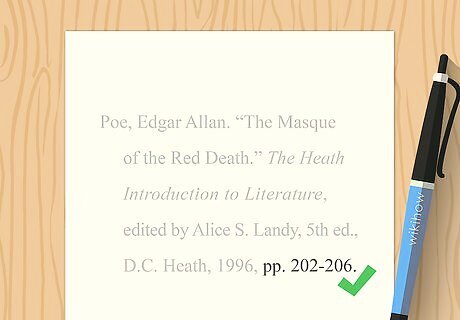
Close your entry with the page numbers for the story. For print short stories, the last element of your Works Cited entry is the page where the short story starts and the page where it ends, separated by a hyphen. Use the abbreviation "pp." before the page range. Place a period after the final page number. Example: Poe, Edgar Allan. "The Masque of the Red Death." The Heath Introduction to Literature, edited by Alice S. Landy, 5th ed., D.C. Heath, 1996, pp. 202-206.
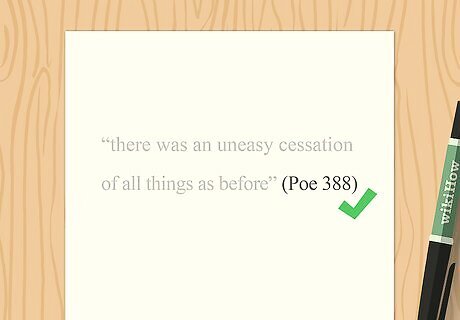
Use the author's last name and page number for in-text citations. Whenever you paraphrase or quote the short story in the body of your research paper, add a parenthetical citation. Include the author's name and the page number where the specific material you mentioned appears. Place a period after the closing parentheses. Example: (Poe 204).
APA
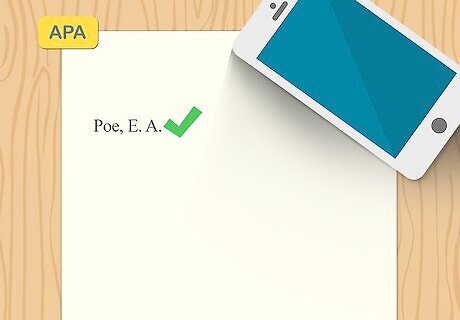
Start your reference list entry with the name of the author. Type the last name of the author, followed by a comma. Then type the author's first initial, followed by a period. Provide their middle initial also, if it is available. Example: Poe, E. A.
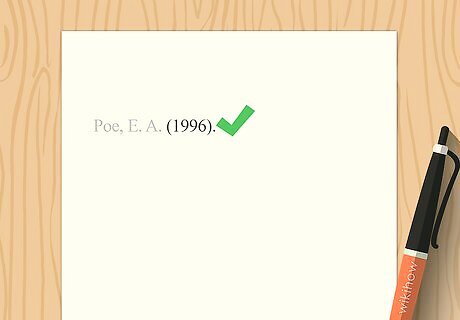
Provide the year of publication in parentheses. Use the year of publication for the collection or anthology where you found the story, not the year the story was originally published (if the two years are different). Place a period after the closing parentheses. Example: Poe, E. A. (1996).
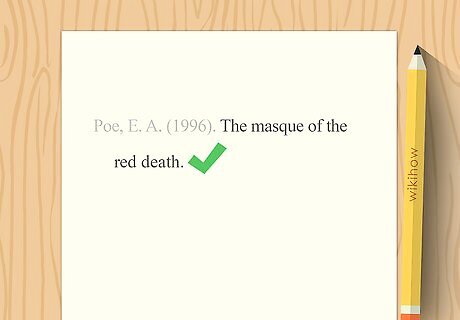
Type the title of the short story. Use sentence-case for the title of the short story, capitalizing only the first word and any proper nouns. No other formatting is necessary. Place a period after the last word of the title. Example: Poe, E. A. (1996). The masque of the red death.
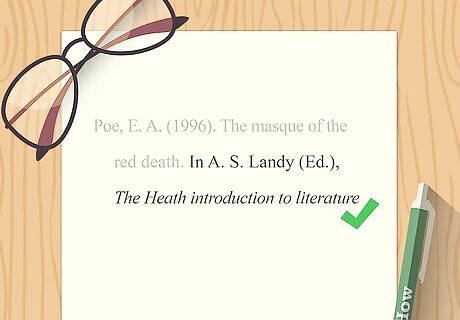
Include the title and editors of the anthology or collection. Start with the word "in," then provide the initials and last names of the editors of the anthology or collection, if applicable. Identify them by placing the abbreviation "Ed." in parentheses. Place a comma after the closing parentheses, then provide the title of the anthology or collection in italics. Use sentence case for the title of the anthology of collection, capitalizing only the first word and any proper nouns. Example: Poe, E. A. (1996). The masque of the red death. In A. S. Landy (Ed.), The Heath introduction to literature If you found the short story by itself, online or elsewhere, skip this portion of the citation.
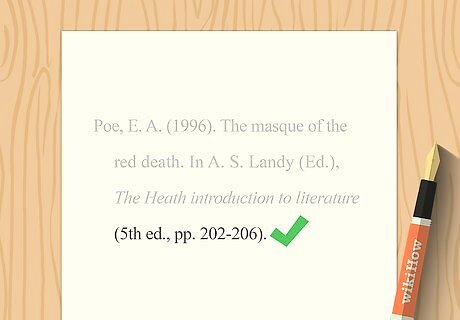
Add edition and page number information in parentheses. If the collection or anthology has multiple editions, type the edition number followed by a comma. Use the abbreviation "pp." then type the page number where the short story begins and the page number where it ends. Separate the page numbers with a hyphen. Place a period after the closing parentheses. Example: Poe, E. A. (1996). The masque of the red death. In A. S. Landy (Ed.), The Heath introduction to literature (5th ed., pp. 202-206).
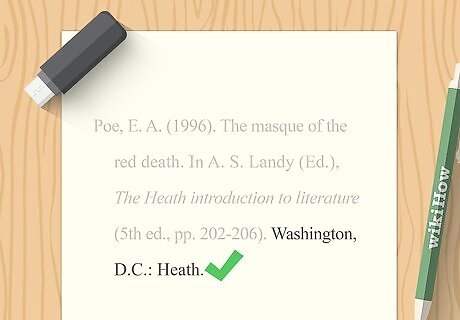
Close your reference list entry with publication information. If the book was published in the US or Canada, provide the city and state or province where the book was published. For books published in other countries, provide the name of the city and the abbreviation for the country. Place a colon after the location, then type the name of the publisher, followed by a period. Example: Poe, E. A. (1996). The masque of the red death. In A. S. Landy (Ed.), The Heath introduction to literature (5th ed., pp. 202-206). Washington, D.C.: Heath.
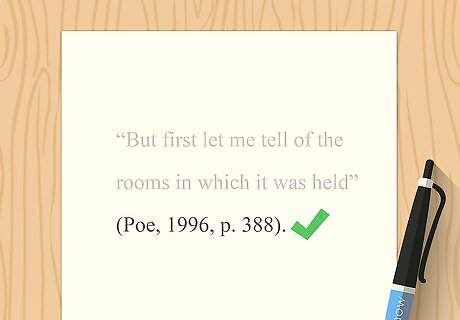
Use the author's name and year of publication for in-text citations. When you paraphrase or quote the short story in the body of your paper, include a parenthetical citation at the end of the sentence to point your readers to the full reference list entry. Place a period after the closing parentheses. Example: (Poe, 1996). If you directly quote the short story, include a page number after the year. For example: (Poe, 1996, p. 204).
Chicago
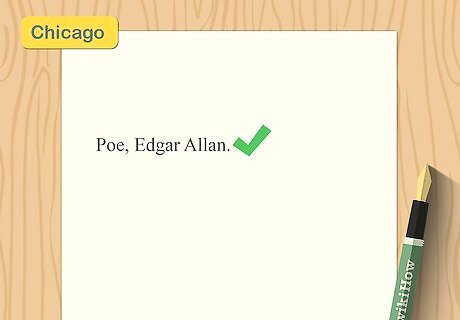
List the author's name first in your bibliographic citation. For a bibliographic citation, format the author's name with their last name first, followed by a comma and their first name. Include their middle name if it is commonly used. Place a period at the end of their name. Example: Poe, Edgar Allan.
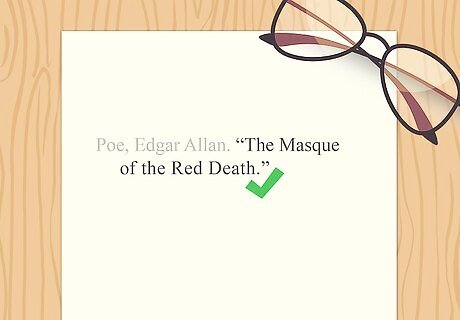
Provide the title of the short story in quotation marks. Since a short story is a shorter work, the title is enclosed in quotation marks. Use title case, capitalizing all nouns, pronouns, verbs, and adverbs in the title. Place a period at the end of the title, inside the closing quotation marks. Example: Poe, Edgar Allan. "The Masque of the Red Death."
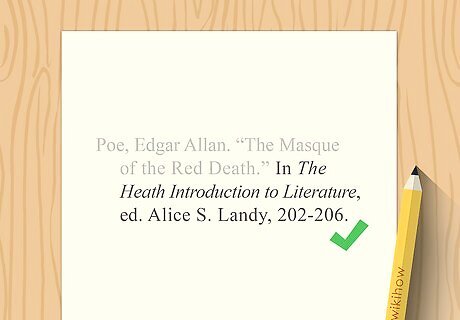
Include information about the anthology or collection. For print short stories, the next element of your Chicago citation is the title of the anthology or collection where the short story appears. Start with the word "In," then put the title of the anthology or collection in italics. If there is a named editor, place a comma after the title and then use the abbreviation "ed." followed by the first and last name of the editor. Place a comma after the name of the editor, then provide the page range where the short story appears. Place a period after the last page number. Example: Poe, Edgar Allan. "The Masque of the Red Death." In The Heath Introduction to Literature, ed. Alice S. Landy, 202-206.
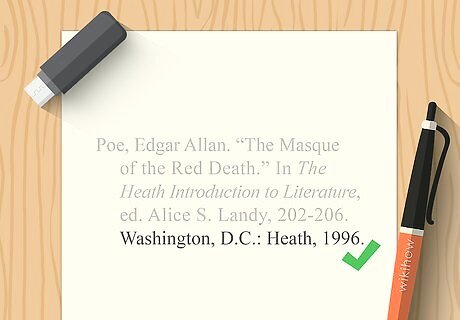
Close your citation with publication information. For books published in the US, provide the city and state. If the book was published in another country, use the name of the city and the abbreviation for the country. Follow the location information with a colon, then type the name of the publisher. Place a comma after the name of the publisher, then type the date of publication. Place a period after the date. Example: Poe, Edgar Allan. "The Masque of the Red Death." In The Heath Introduction to Literature, ed. Alice S. Landy, 202-206. Washington, D.C.: Heath, 1996.
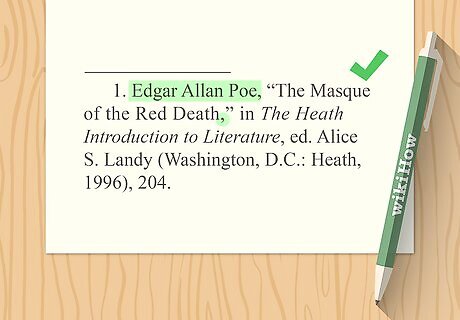
Adjust punctuation and format for footnotes. Chicago style calls for footnotes whenever you paraphrase or quote the source. The information in the footnote is the same as the information in the bibliography entry. However, generally, you'll use commas instead of periods to separate elements. Publication information is placed in parentheses, and the author's name is formatted with their first name followed by their last name. Instead of a page range, provide a specific page number at the end of the footnote to direct your readers to the page where the passage you cited appears. The only period in a footnote is at the very end. Example: Edgar Allan Poe, "The Masque of the Red Death," in The Heath Introduction to Literature, ed. Alice S. Landy (Washington, D.C.: Heath, 1996), 204.












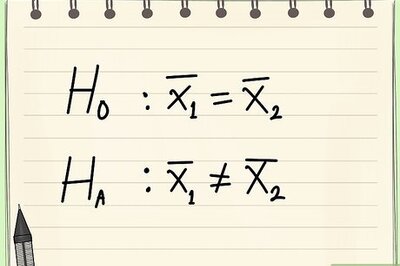
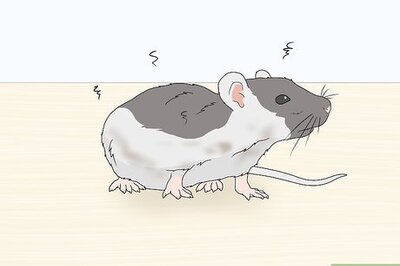

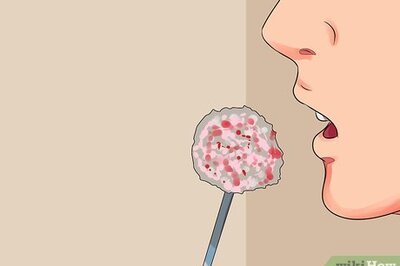



Comments
0 comment